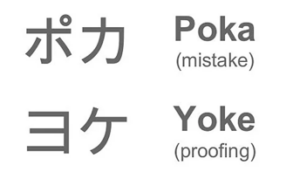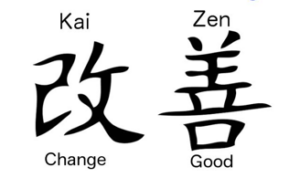Lean Approaches In Technology Used By Medianova
This Is How We Use Lean Approaches In Technology At Medianova
Without being aware of the existence of many concepts, we enjoy the comfort these concepts bring to our life and business life. One of these concepts is Lean Production and some applications it brings with it. Lean Production is basically defined as a production and management approach in which all wastes are eliminated. Its’ basic principles were first urged by Eiji Toyoda and Taiichi Ohno – who were members of the Toyoda family- in the Japanese Toyota firm in the 1950s.
Poka-Yoke, Kaizen, Jidoka, Heijunka, Standardization, and Statistical Analysis are among the basic applications that form the building blocks of Lean Manufacturing. Don’t these phrases sound interesting? They are all Japanese phrases brought to life by the Toyoda family.
Contrary to what is thought and the illusion in its name, Lean approaches philosophy is encountered not only in conventional production facilities but also in many different sectors, organizations, and even life. The concept of software development has turned into Agile Software Development with a similar philosophy, aiming to adapt quickly to changing needs and customer needs, to reduce waste and to develop incrementally and iteratively.
Today, we would like to talk about some of the Lean Manufacturing practices we encounter in our daily life and the gains we have achieved at Medianova.
Poka Yoke
Poka Yoke, which was introduced by Toyota and became popular in the 1960s, means “mistake-proofing“. It was first used to prevent assembly line workers from unintentionally making mistakes and damaging production. Its purpose is to prevent, correct, or reveal human errors before they occur.

An example of poka-yoke in daily life is when ATMs deliver the card first and then the money in order to prevent forgetting the card during cash withdrawal. In the case of document cabinets with large and deep drawers, the fact that one drawer cannot be opened without another being closed is another poka-yoke practice. Thus, the cabinet is prevented from overturning due to the weight of the open drawer. Using different colored cables or different connectors to install the right cables in the right place is another poka-yoke practice that we commonly encounter, but we are often unaware of the philosophy behind it.
Some of the poka-yoke practices we have implemented as Medianova are as follows:
We monitor the entire platform from dozens of different points with 3500 different sensors 24/7. With the help of PRTG monitoring tool we use and the alerts and alarms we have set, we can prevent or take necessary measures before any adverse situation takes place on our platform.
For example, in the image below, an alarm has been triggered indicating that the server’s CPU has reached a threshold we had defined previously. With this warning, the necessary measures are taken by the Medianova team to prevent the server from becoming inoperable.

Another practice is the documents published in order to prevent the difficulties and errors that customers using Medianova platform may encounter while trying to set their own configurations on Medianova’s platform.
Kaizen
Kaizen is another critical lean manufacturing practice that is formed by the combination of Japanese “kai” and “zen” words and means “continuous improvement.” Its primary purpose is to improve the person himself or his job with small but continuous steps to achieve a better result. Kaizen argues that there is no development unless there is a problem, additionally, it suggests that the development should be continuous and unlimited.

Suggestion systems and personal development techniques applied for self-improvement are examples of Kaizen. They aim at “continuous improvement” in our daily life.
Medianova has adopted the Kaizen philosophy with the vision of “being a global company known by everyone” and “achieving perfection“. With this vision, it has continuously improved its technology since its establishment. Some examples of this development are as follows:
-
Anycast DNS Technology used to reduce the DNS lookup latency of the end-users.
-
Dynamic Request-Routing System developed to reduce latency by directing end-users to the closest CDN service points,
-
NOS (Nearest Origin Server) Engine developed to improve the paths between origin servers and CDN service points,
-
Studies such as Workload Automation Engine and AI-Based Server Assignment, which aim to improve content service quality and resource efficiency, have brought Medianova’s CDN infrastructure to its current position.
In addition, statistical and data-based studies such as analyzing bandwidth usage and DNS performance are also a part of our continuous improvement.
Heijunka
Heijunka means “leveling” in Japanese, in Lean Production philosophy it means leveling the production type and quantity for a certain period of time. It aims to respond quickly to changing customer demands and to keep resources such as inventory, stock, investment costs and labor from wasting while catching this change.
In Agile Approaches, Scrum methodology can be given as an example of Heijunka. Scrum, one of the agile principles applied to software development, is applied by the Medianova teams in the way that large works are divided into small parts and completed with the principle of “Agility and Simplicity” at planned times. Scrum activities such as daily meetings cause Medianova project teams to work in a more coordinated manner with each other, while the teams keep up-to-date information about the projects. Thus, it adapts quickly to changing needs and uncertainties. One of the biggest advantages using this methodology has brought for Medianova is that in addition to strong communication with the project teams, the chance to have communication with the customers gives us the opportunity to focus quickly on customer requests.
In addition to Jira (an Atlassian product) which we use for Agile project management, we use Confluence (another product of Atlassian) for product documentation and management. They both help us with agility and simplicity. We use Slack application in order to ensure healthy communication with our employees as well as our customers. Slack, which can be integrated with other applications such as Atlassian, Zoom, Microsoft Outlook, offers users a wide range of advantages making them able to get informed about what is happening around them. Through many years of experience, the benefits of these applications have been proven. We also apply lean approaches that are suitable for our corporate and offer our customers the added value they have brought for us.
As a result of all of them, we offer more reliable services to our customers by transforming the developing technology at the speed of light. And that’s how we make use of Lean approaches in our technology!



